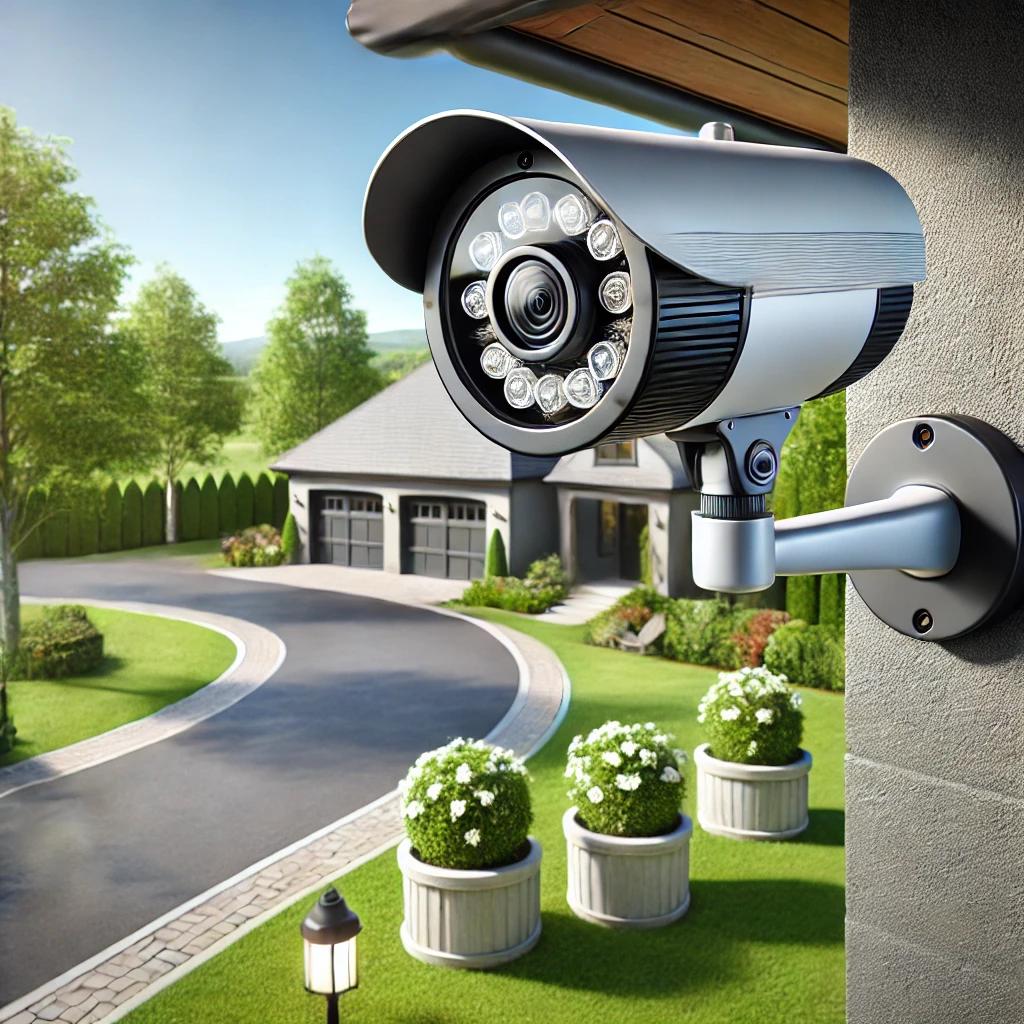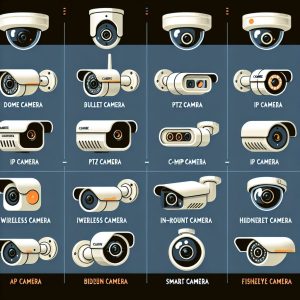Introduction
Selecting the right security camera is a crucial step in building a comprehensive home security system. With so many options available—from traditional CCTV cameras to modern smart devices—the choices can feel overwhelming. The ideal camera setup depends on factors like location, desired features, and budget. This guide will walk you through essential considerations for selecting the perfect security camera, helping you make an informed choice to protect your home and loved ones.
1. Determine Your Primary Security Needs
Start by identifying what you want your security camera to achieve. Are you looking to monitor entry points, deter intruders, or capture evidence in case of an incident? Defining your security goals will help you focus on the features that are most relevant for your home monitoring needs.
Examples of Security Needs:
- General Surveillance: Opt for cameras with wide coverage and clear resolution.
- Entry Point Monitoring: Choose high-definition cameras to capture clear images of faces.
- Outdoor Surveillance: Look for weatherproof security cameras with night vision and wide-angle lenses.
2. Decide on Indoor vs. Outdoor Cameras
Once you’ve outlined your primary security needs, decide whether you need cameras for indoor or outdoor use. Outdoor security cameras are designed to withstand weather elements and often come with features like night vision, while indoor surveillance cameras focus on coverage, resolution, and ease of installation.
Considerations:
- Outdoor Cameras: Look for weather-resistant models with night vision and durable construction.
- Indoor Cameras: Prioritize compact size, ease of placement, and motion detection capabilities.
3. Choose Between Wired and Wireless Options
Both wired and wireless cameras offer benefits and limitations. Wireless cameras are easy to install and allow flexible placement, while wired security cameras provide a stable connection and consistent power supply. Your choice will depend on factors like the camera’s location, need for mobility, and your home’s layout.
Pros and Cons:
- Wireless Cameras: Flexible and easy to install; they typically rely on Wi-Fi and batteries.
- Wired Cameras: Stable connection and continuous power, though they require installation and are less portable.
4. Consider Resolution and Image Quality
High-resolution security cameras capture clear images, which can be essential for identifying faces or details in an incident. Most modern home surveillance cameras offer HD (720p or 1080p) quality, while high-end options provide 4K resolution for even more detailed footage. If image quality is a priority, choose the highest resolution that fits your budget.
Image Quality Options:
- HD (720p or 1080p): Suitable for basic monitoring with clear enough footage for general purposes.
- 4K Resolution: Ideal for capturing detailed images, especially for larger areas.
5. Evaluate Night Vision Capabilities
Night vision is essential for outdoor cameras or any areas with limited lighting. Cameras equipped with infrared (IR) technology can capture clear footage in low light, while some advanced models offer color night vision for greater detail.
Types of Night Vision:
- Infrared (IR) Night Vision: Standard black-and-white footage in low-light settings.
- Color Night Vision: Provides color images in low light, adding clarity in dimly lit areas.
6. Look for Motion Detection and Alerts
Motion detection is a key feature for alerting you to activity in certain areas. Cameras with motion detection can send real-time security alerts to your smartphone when movement is detected. This feature is especially useful for high-traffic or vulnerable areas.
Types of Motion Detection:
- Basic Motion Detection: Alerts triggered by any movement within the frame.
- AI-Enhanced Detection: Differentiates between people, animals, and objects to reduce false alerts.
7. Decide on Storage Options: Local vs. Cloud Storage
Choosing the right storage option is essential for retaining footage for later review. Most cameras offer either local storage (e.g., SD cards or hard drives) or cloud storage. Cloud storage allows remote access and automatic backups, while local storage is often more affordable and doesn’t require a subscription.
Storage Options:
- Local Storage: Direct access without recurring fees, though capacity may be limited.
- Cloud Storage: Remote access and backup capabilities, though typically requiring a subscription.
8. Explore Smart Home Compatibility
If you already use smart home devices, consider cameras compatible with your current setup. Many security cameras now integrate with platforms like Alexa, Google Assistant, or Apple HomeKit, allowing control through voice commands and central apps.
Benefits of Smart Compatibility:
- Seamless Control: Manage cameras and other smart home devices from one platform.
- Automation: Set up custom automation, such as activating cameras or alerts based on detected activity.
9. Check for Power Source Options
Security cameras can be powered by batteries, solar panels, or direct electrical wiring. The power source affects both the placement and maintenance needs of the camera. Battery-powered cameras offer flexibility in placement but need regular recharging, while wired cameras provide consistent power and are generally low maintenance.
Power Source Options:
- Battery-Powered: Flexible placement options, ideal for remote areas; requires periodic recharging.
- Wired: Continuous power, though placement is limited by the need for nearby outlets.
10. Consider Additional Features
Many security cameras come with advanced features like two-way audio, zoom, and pan-tilt-zoom (PTZ) capabilities. Two-way audio allows you to communicate with visitors, while PTZ cameras enable you to adjust the camera’s view remotely. Decide which features align with your security goals and specific requirements.
Popular Additional Features:
- Two-Way Audio: Communicate with visitors or deter intruders remotely.
- PTZ: Adjust the field of view for broader surveillance coverage.
- Zoom: Capture finer details when needed, enhancing monitoring precision.
Conclusion
Choosing the right security camera involves understanding your specific security needs, the environment where the camera will be placed, and the technology that fits within your budget. By considering factors like resolution, motion detection, storage options, and smart home compatibility, you can select a camera that provides effective protection and aligns with your home’s layout and lifestyle.
Security cameras have become an essential part of home monitoring, enabling homeowners to keep their families safe and monitor their properties remotely. With this guide, you’re well-equipped to make a confident decision and build a security system that enhances the safety and peace of mind for everyone in your home.





